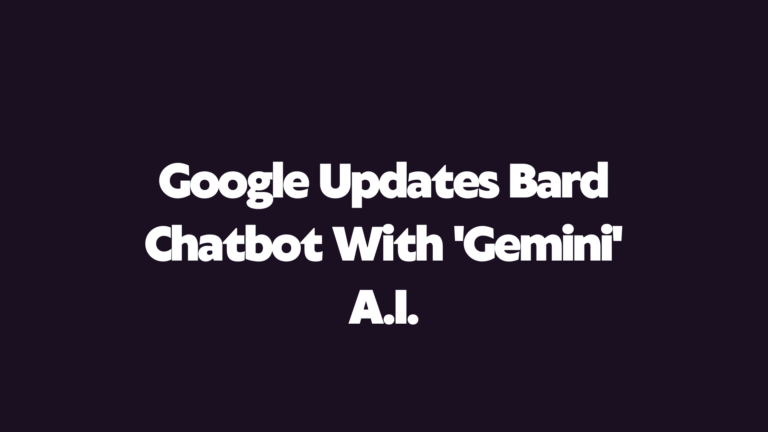Passage Ranking for eCommerce SEO🔍
For me, passage ranking for eCommerce SEO is not shouted about enough! It’s a game changer and can help eCommerce brands climb to the top of Google SERPs!
Creativity and understanding your customers are what makes solid passage ranking hubs for your customers!

First, what Is Google Passage Ranking?🤔
By no means is Google passage ranking a 2023 algorithm update!
The Google Passage Ranking algorithm modification was first known as “passage indexing.” In other words, Google is modifying the search engine’s algorithm to provide consumers with better unique results to match their queries.
The Google Passage algorithm update is a further method for Google AI to better understand the context of information on a webpage, enabling Google to identify particular sections of text within a page that respond more directly to a search query.
If you’re familiar with BERT (a cool name I know). This is similar to its BERT language processing update from back in 2019.
In their release from October 2020, Google stated: “Highly precise searches might be the toughest to get right, as the one line that provides the solution to your problem may occasionally be hidden deep within a webpage.
Personally, I think this is awesome and cuts out a user having to scroll through walls of text to find the answer to their query.
Recent advancements in the ranking have improved our understanding of the relevance of particular texts. We can identify the information you’re seeking by comprehending portions in addition to the whole page’s relevance.
Google has changed passage indexing” to “passage ranking”.
Why?
Google said that this algorithm tweak had no impact on how website content is indexed!
Why is passage ranking relevant to eCommerce?
I am seeing this as very relevant! E-commerce brands are jumping up the SERPs by using passage ranking and RankBrain.
How Does Google Passage Ranking Work?

The technology to process a page is insane! Google Passage Ranking works by analysing the context of text on a webpage, allowing it to identify specific sections of text within a page that are more directly relevant to a search query.
Google is understanding your hub pages now more than ever!
This follows in line with Google’s recent advancements in ranking algorithms that have improved their understanding of the relevance of certain texts. With this algorithm in place, Google can comprehend portions of a page as well as the whole page’s relevance to a query.
How does RankBrain work? 🧠

SERPs results are displayed whenever a user inputs a term or phrase into a search engine. The way RankBrain is different is that it uses the word “vectors,” which are mathematical links or connections between words and sentences.
Semantic SEO plays a part 🕸️
Semantic SEO is the technique of giving online text depth and significance through semantic search engine optimisation. You help Google crawlers in their understanding of your content by doing this. Furthermore, you aid them in recognising its excellent calibre so that they will frequently advertise it in the SERPs.
Why does this matter?
It plays a part when you’re creating your passage hub pages!
So how does this work?
So there’s passage ranking, Rankbrain, and Semantic SEO. There are a few ingredients to play with here, right?
Let’s cook something special.
Brands that use these are creating mult-intent hub pages that Google’s crawling and understanding. Gone are the days of having a boring AF single intent page.
Your customers don’t have time to keep clicking through the single query intent page.
How to create a rankable passage ranking eCommerce hub page 🚀
Step 1
Choose your broad query for the intent hub page that you want to rank for. For example, “electric cars”. Note that this search has many intents:
- To buy
- Interest
- Looking for brands
- First stage and the customer has no idea
Step 2
Break up these intents into nodes and group these nodes with supporting keywords.
Step 3
Okay, now you have your clustered intents. You need to give each one a section within your pillar hub page.
Step 4
Work on your internal linking structure through the different intents. Make sure to make the H1 and supporting H2 clear on each intent lead page.
Step 5
Let Google crawl your intent/sub-intent pages.
Step 6
Rank!
What are the benefits of combining passage ranking on multi-intent pages?
Here’s what Google says about understanding sub-topics:
“We’ve applied neural nets to understand subtopics around an interest, which helps deliver a greater diversity of content when you search for something broad. As an example, if you search for “home exercise equipment,” we can now understand relevant subtopics, such as budget equipment, premium picks, or small space ideas, and show a wider range of content for you on the search results page. We’ll start rolling this out by the end of this year.”
There are many solid benefits to this;
- You help search engines understand your web structure
- You help your customers on the customer journey
- You reduce click-depth
- You can increase conversions
- You will help your clusters to rank
- You will do what most other brands don’t
Passage Ranking VS Featured Snippets
Don’t get confused with passage ranking and featured snippets. They both help Google provide searchers with better answers. But, passage Ranking and Featured Snippets are two separate things:
- Passage Ranking: An internal algorithm tweak called Passage Ranking aims to improve Google AI’s comprehension of when to provide contextual information in search results.
- Featured Snippets: According to Danny Sullivan, Google’s Public Liaison for Search, Featured Snippets, also known as Position 0, is a SERP feature designed to offer quick answers and support voice search usage. Danny Sullivan made this clarification in a tweet last year. This may be understood simply by noting that Featured Snippets appear in Position 0 and in the People Also Ask boxes, but the Passage Ranking modification will affect organic results that do not appear in the SERP.
What Is the Difference Between Passage Indexing and RankBrain?
A machine learning-based system called RankBrain aids Google in processing search results and giving consumers the most relevant search results.
Passage indexing is used to analyse web content and identify relevant sections related to a searcher’s query.
Which eCommerce brand does this well?
I have to take my hat off to IKEA. 🎩
They’re awesome at combining mult-intents in a singular web page for their customers.
Frequently Asked Questions 🤔
What is passage ranking in SEO?
Passage ranking refers to a technique used by search engines to rank individual passages within a web page, rather than just the entire page. This technique allows search engines to provide more accurate and relevant results for specific search queries, as it can identify and rank passages that are most relevant to the user’s search intent.
How does passage ranking work?
Passage ranking works by analysing the content of a web page and identifying individual passages that are most relevant to the user’s search query. Search engines use a combination of natural language processing (NLP) and machine learning algorithms to analyse the content and context of the passage, as well as the user’s search history and other factors, to determine its relevance to the search query.
How can you optimise your content for passage ranking?
To optimise your content for passage ranking, it’s important to focus on creating high-quality, in-depth content that addresses specific user queries and provides valuable information. This can include using headings and subheadings to break up the content, incorporating relevant keywords and phrases, and providing clear and concise answers to commonly asked questions.
How does passage ranking affect SEO?
Passage ranking can have a significant impact on SEO, as it allows search engines to provide more accurate and relevant results for specific search queries. By optimising your content for passage ranking, you can improve your visibility in search results and increase your chances of attracting organic traffic to your website. Additionally, by providing high-quality, in-depth content that answers users’ questions and addresses their concerns, you can establish yourself as a trusted authority in your industry and build stronger relationships with your audience.




